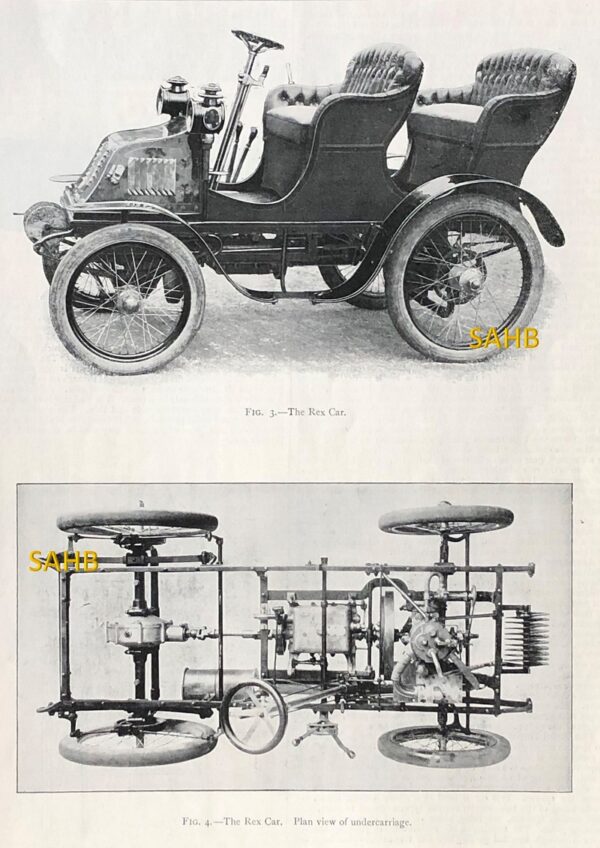
It is rare to find as clear an image of the underpinnings of an early motor car as we can see in the lower picture in this week’s Snapshot – and it reveals some interesting details. Firstly, at a time when many cars had chain drive, this small car with a single-cylinder 900cc engine had shaft drive with a differential.
The most curious feature of this 1901 Rex is its radiator. The upper picture could not explain it: why would any car have drum hanging between its dumb irons? All is revealed in the lower image: it is a series of cooling discs around a cross-tube.
The text accompanying the two images is sadly sparse but tells us that this was a completely British car, not a mere copy of other conventional designs. The single-cylinder engine, of Rex’s own manufacture, was mounted longitudinally in the front of the car and was a flat-head, with side-valves embedded in the water jacket (atmospheric inlet and cam-driven exhaust). It ran at 1,400rpm. Ignition was by high-tension electrics and the carburettor was of the surface type. The two-speed gearbox was especially sturdy, with ample bearings, and direct drive in top. The wheel steering was of pillar-and-worm type.
The Rex was built by the Birmingham Motor Manufacturing Company and is perhaps better known for its motorcycles. In 1902 the company merged with another car and motorcycle manufacturer, Allard. Much later, in 1922, ther was another merger with Coventry’s ‘Acme’ motorcycle company to form ‘Rex Acme’. That company existed until 1933, and, in its heyday, made some of the finest British motorcycles.
This early model was exhibited at the 1901 Crystal Palace motor show, billed as “Rex King of British Motor Cars”. There were successive increases in power from this 6.5hp machine, and by 1903 the car was available with up to 16hp. By then the radiator had become more conventional.
In May 1904 the Rexette arrived, marketed as the “King of Little Cars”, it was a 5hp tricar with tandem seating, with the driver at the back, and was powered through a single rear wheel. Motor car production largely petered out after 1911 and the focus was thereafter upon motorcycles.
Image courtesy of The Richard Roberts Archive: www.richardrobertsarchive.org.uk







Leave a Comment